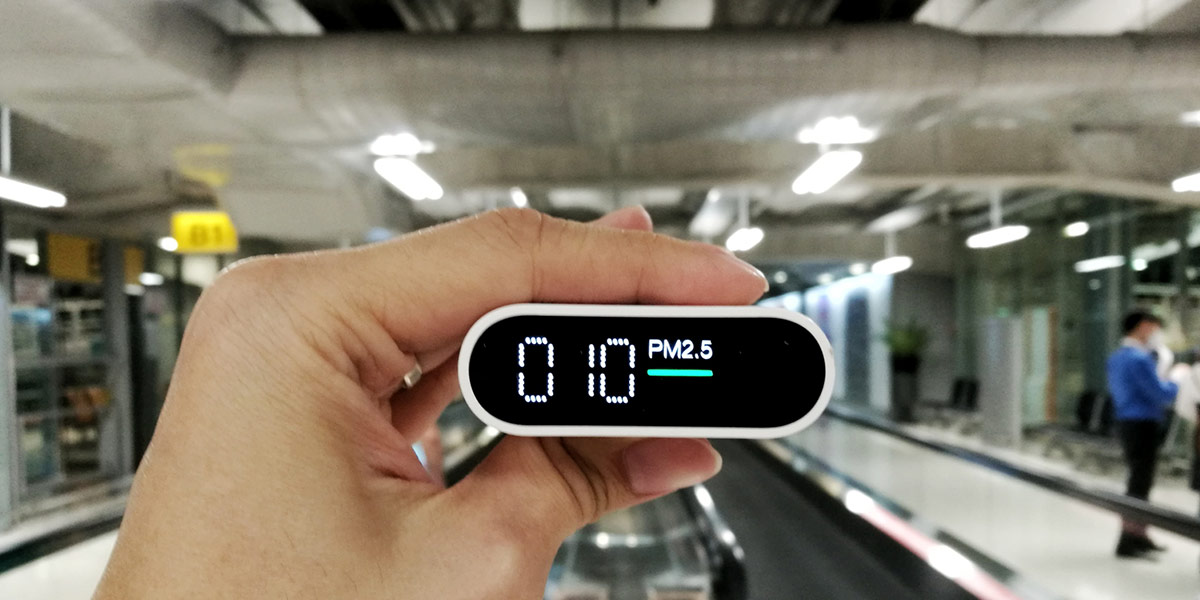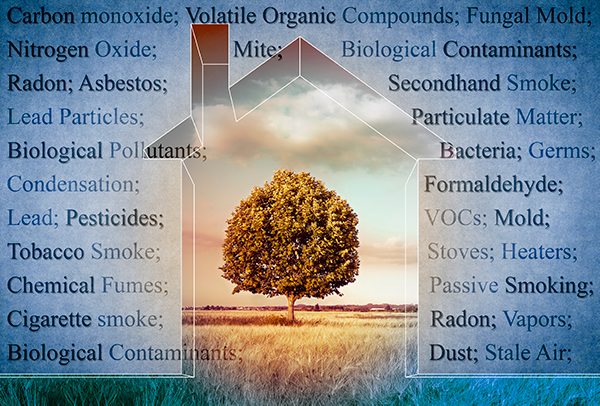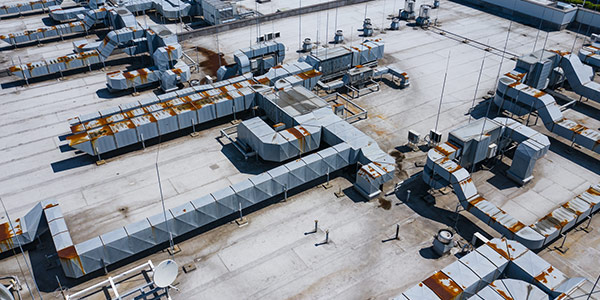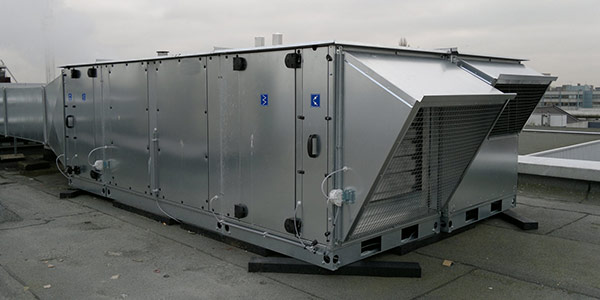
Contents
IAQ or Indoor Air Quality means exactly what it says; it’s the quality assessment of the air you breathe in and around buildings or other structures at your commercial, industrial, or manufacturing work site. It relates directly to the health of human occupants of those work spaces. There are a myriad of factors that impact IAQ and several health consequences, both immediate and long-term, that can occur as a result of substandard IAQ. From hospital managers focused on better controlling infections to plant supervisors seeking the highest purity standards in food processing or pharmaceutical manufacturing, optimal air quality is among the top of all healthy workplace considerations.

Factors that negatively impact air quality
Poor air quality is essentially the result of airborne pollutants combined with inadequate ventilation. Ventilation, or circulation, is how air moves through a building to bring in “fresher” outside air to dilute and disperse any potential pollutants, such as particles or gases, from inside a building. If a building is not properly ventilated, rising pollution levels may eventually prove toxic or even lethal to its occupants.
Common sources of air pollutants
Inside:
- Deteriorated asbestos-containing insulation
- Excess moisture
- Newly installed flooring, upholstery or carpet
- Cabinetry or furniture made of certain pressed wood products
- Industrial-grade cleaning products used in common areas, offices, warehouses and plants
- Central heating and cooling systems and humidification devices
- Malfunctioning or unvented machinery or other appliances
- Tobacco products
Outside:
- Outdoor air pollution
- Radon
- Pesticides
- Weather related factors such as humidity and high temperatures
How one or a combination of these factors will affect occupants of a building depends on the individuals and their personal health conditions. Two people can work side by side in the same environment and have totally different reactions to various contaminants in the air. In some cases, people who are routinely exposed to high levels of pollutants can actually build a tolerance to them. This doesn’t mean that long-term health problems won’t arise; it simply means they’re functioning daily in a potentially dangerous environment. There are immediate and long-term health effects common with breathing air that’s inadequately ventilated.
Immediate Effects: Irritation of the eyes, nose, and throat, headaches, dizziness, fatigue, burning sensation of the skin, itching, rashes, and respiratory distress.
- Some of these can occur after just one exposure to polluted IAQ and are, in most cases, easy to resolve. Removing the person from the environment is the fastest, most effective solution. Minor medical treatments, such as a rash cream, may sometimes be necessary.
- You’ve probably noticed those effects also mirror the symptoms of the common cold and other viral diseases, like the flu. This makes it challenging to know for certain if the physical reaction is caused by a virus or by contaminated IAQ. If a person’s symptoms ease over a short period time while they continue to come in to work every day, then it is probably viral. If the person remains sick and only gets better by being away from the workplace, that environment is the likely culprit. If this happens, an inspection and assessment of all possible indoor pollutants should be conducted, with remedies deployed as soon as possible to avoid further human illness and lost productivity.
Long-Term Effects: Respiratory diseases, heart disease, chronic lung conditions, prolonged skin conditions, cancer and other potentially lethal outcomes.
- These negative health impacts can manifest years after the initial exposure, such as in the case of asbestos contamination. Sometimes, exposure to a pollutant only needs to happen once to set a chain of health problems in motion, other times it may be after repeated exposures.
Immediate or long-term, these health risks should be a paramount reason for vigilant air quality testing and improvement in your workplace. Your employees’ well-being and your company’s operational success depend upon it.
Now that we know the most common reasons for poor IAQ and the associated health risks, let’s get solution-focused. Here’s the best way to improve your workplace air quality, protect employee health, and maximize operational readiness.

Want Better Air Quality? Optimize Air Ventilation
While improving ventilation isn’t the only solution to better air quality, it has a major impact. There are three ways a building can be ventilated using outside air; infiltration, natural ventilation, and mechanical ventilation.
Infiltration
Outdoor air enters interior spaces through openings, joints, and cracks in walls, floors, and ceilings, and around closed windows and doors (drafts). The effectiveness of this type of ventilation is affected by outdoor temperature, wind conditions, and the contrast with indoor temperature. Since it relies mostly on unintended breaches in the building’s infrastructure, it is not a reliable or effective method of ventilation. Stagnant, moist air that lingers indoors can accelerate the growth of mold and mildew, leading to harmful airborne particles that are just waiting to be inhaled by unsuspecting respiratory systems.

Natural Ventilation
Air moves through intentionally opened windows and doors. Like infiltration, this air movement relies on the same factors of outdoor-to-indoor temperatures and wind velocity. While this approach may provide a slightly lower mold and mildew risk due to the more deliberate avenues for air exchange (open windows, doors, screens, etc.), moist air can still promote the growth of microorganisms if the airflow is not adequate.

Mechanical Ventilation
This involves the addition of mechanical devices to improve the air flow from natural ventilation or infiltration. One example is a fan that vents to the outdoors placed in a single room, such as a small office, breakroom, or bathroom. On the other end of that spectrum is a large air handling system that uses a network of fans and ductwork to continuously cycle air through a building, renewing indoor air with fresh and filtered outside air. If you have a heating and air conditioning system in your business (and most companies do!), you have an air handler operating with that HVAC to circulate air from the outside in - and back out again - along with components that heat or cool that air according to the thermostat settings. Along with maximizing effective ventilation, the American Society of Heating, Refrigerating, and Air Conditioning Engineers (ASHRAE) developed a comprehensive IAQ guide that outlines how to best achieve effective IAQ in a way that closely aligns with our approach here at BIG. Two key words in any robust IAQ plan are “limit” and “control”.
- Control moisture in building assemblies
- Limit the intrusion of outside contaminants
- Control any moisture and contaminants related to mechanical systems
- Limit contaminants from indoor sources
Additionally, you will want to capture and exhaust any contaminants from building equipment and activities and reduce contaminant concentrations through ventilation, filtration, and air cleaning. The ASHRAE IAQ guide gives both overview and detailed guidance on how to develop and execute the strategies for each of these critical IAQ program components.
Along with the clear benefits of investing in better air quality systems for your workforce and operations, there are state and federal environmental guidelines governing air quality and it’s always a good idea to comfortably outpace regulations. The Environmental Protection Agency’s (EPA) Clean Air Act (CAA), “sets limits on certain air pollutants, including setting limits on how much can be in the air anywhere in the United States. The Clean Air Act also gives EPA the authority to limit emissions of air pollutants coming from sources like chemical plants, utilities, and steel mills. Individual states or tribes may have stronger air pollution laws, but they may not have weaker pollution limits than those set by EPA”. The EPA also has ten state, local, and tribal regional offices that can provide more specific IAQ guidance for your area and OSHA provides detailed regulatory guidance, as well.
To gain a better understanding of how exterior air ducts can affect IAQ, see our posts How Wrapped Insulation on Rooftop Ducts Fail and Reasons Why Ductwork Fails and How to Avoid Them.
Banks Industrial Group provides maintenance solutions for all of your needs. To learn more about improving the IAQ at your commercial, industrial, or manufacturing workplace, visit our learning center or use the contact us here.
Sources:
https://www.osha.gov/indoor-air-quality
https://www.banksindustrial.com/hvac-duct-insulation
https://www.epa.gov/indoor-air-quality-iaq/introduction-indoor-air-quality
https://www.ashrae.org/file%20library/technical%20resources/bookstore/iaq-guide-primer-from-the-may-2010.pdf)